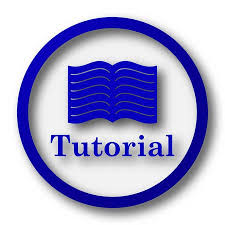Publication Ethics
Publication ethics is aimed at ensuring the accountability (responsibility) of all parties involved in the presentation of scientific publications. The parties involved are journal managers, peer reviewrs, editors, and authors. In accordance with Regulation of the Head of LIPI No. 5 of 2014, the publication code of ethics upholds three values, i.e. (i) Neutrality, that is being free from conflicts of interest in publication management; (ii) Justice, meaning that granting authorship rights to those entitled to be authors/writers; and (iii) Fairness, namely free from duplication, fabrification (made-up research data), falsification (research data that is falsified or incorrectly reported), and plagiarism (taking other people's words/sentences) (DF2P) in publications .
Regulation of the Head of LIPI No. 5 of 2014 describes the responsibilities of each party, namely:
Manager's Responsibilities
- Determining the name of the journal, scientific scope, periodicity, and accreditation if necessary.
- Determining the membership of the editorial board.
- Defining the relationship among publishers, editors, peer reviewers, and other parties in a contract.
- Respecting confidential matters, both for contributing researchers, authors/writers, editors, and peer reviewers.
- Implementing norms and provisions regarding intellectual property rights, especially copyrights.
- Reviewing journal policies and submitting them to the authors/writers, board of editors, peer reviewers, and readers.
- Creating code of conduct guidelines for editors and peer reviewers.
- Publishing the journal regularly.
- Guaranteeing the availability of funding sources for the continuation of journal publication.
- Building a network of collaboration and marketing.
- Preparing permits and other legal aspects.
Editor’s Duties and Responsibilities
- Meeting the needs of readers and authors,
- Endeavouring to improve the quality of publications in a sustainable manner,
- Implementing a process to ensure the quality of published papers,
- Prioritizing freedom of opinion objectively,
- Maintain the integrity of the author's academic track record,
- Delivering corrections, clarifications, withdrawals, and apologies, when necessary,
- Taking the responsibility for the style and format of the written work, while the contents and all statements in the written work are the responsibility of the author,
- Actively soliciting the opinions of authors, readers, peer reviewers, and members of the editorial board to improve the quality of publications,
- Encouraging an assessment of the journal if there are findings,
- Supporting initiatives to reduce research and publication errors by asking authors to attach an Ethical Clearance form that has been approved by the Ethics Clearance Commission,
- Supporting initiatives to educate researchers on publication ethics,
- Assessing the effect of publication policies on the attitudes of authors/writers and peer reviewers and improve them increasing responsibility and reducing mistakes,
- Having an open mind to new opinions or other people's views that may conflict with personal opinions,
- Not defending one's own opinion, the author or a third party which may result in an objective decision,
- Encouraging authors, therefore they can make improvements to their written work so that it is worthy of publication.
Peer Reviewer’s Duties and Responsibilities
- Receiving assignments from the editor to review written works and submit the results of the review to the editor, as the material for determining the feasibility of a written work for publication.
- Papers are reviewed in a timely manner according to the style of the publication environment based on scientific principles (data collection methods, author legality, conclusions, etc.).
- Reviewing the written work that has been revised according to predetermined standards.
- Encouraging authors/writers to make improvements to the written works
- Maintaining the privacy of the authors by not disseminating the results of corrections, suggestions and recommendations by providing criticism, suggestions, input and recommendations
- Reviewers may not conduct a review of written works that involve themselves, either directly or indirectly.
Author’s Duties and Responsibilities
- Ensuring that those included in the Author list meet the criteria as authors.
- Taking collective responsibility for the work and the contents of the article including methods, analysis, calculations and details.
- Stating the origin of resources (including funding), either directly or indirectly.
- Explaining the limitations of the research
- Responding to comments made by peer reviewers in a professional and timely manner.
- Informing the editor if he/she will withdraw his written work.
- Respecting if there is a request from the publisher not to publish the results of the meeting either in the form of interviews or through other media before being published by the publisher.
- Making a statement that the paper submitted for publication is original, has never been published anywhere in any language, and is not in the process of being submitted to another publisher.








